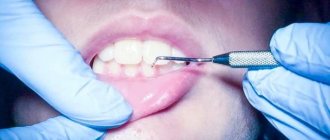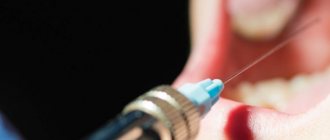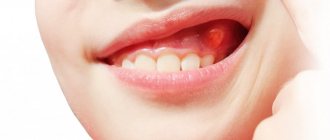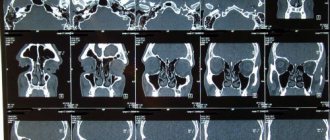A deviation in which the nose, area above the lip, forehead, and cheeks sweat profusely is known in medicine as facial hyperhidrosis. Increased sweating in this area occurs during exercise and stress, and this is the norm. But sometimes excessive sweating in an adult is caused by disorders in the body that require timely identification and treatment.
What are the causes of hyperhidrosis?
It is customary to divide hyperhidrosis of the head and face into 2 types, taking into account the causes of occurrence:
Primary sweating of the forehead and face is caused by genetic abnormalities, heredity or pathologies in the functioning of the central nervous system.
In this case, facial hyperhidrosis is more difficult to cure. If severe sweating of the head and face is caused by abnormalities in the functioning of the central nervous system, then it is possible to get rid of the disease. But it is impossible to eliminate perspiration that has arisen against the background of genetic factors and heredity. In this case, doctors recommend taking preventive measures for hyperhidrosis.
Secondary causes of facial sweating are more extensive and easier to treat. These include:
- pathologies in the body of various etiologies;
- drug therapy;
- hormonal disorders that are often observed in women during pregnancy, menopause or menopause;
- thyroid disorders;
- excessive alcohol intake;
- overweight;
- cardiovascular diseases;
- excess of food additives in the diet;
- neurotic pathologies;
- allergic reaction.
Increased sweating can occur due to diabetes.
The patient’s face and head often sweat due to the following pathological conditions:
- increased thyroid function;
- diabetes;
- hormonal formation of the adrenal glands;
- carcinoid syndrome;
- impaired functioning of the pituitary gland;
- tuberculosis disease;
- penetration of harmful microbes into the body;
- malarial infection;
- HIV and AIDS;
- cancerous tumors;
- brain damage;
- Parkinson's disease;
- neurosyphilis;
- stroke and vegetative-vascular dystonia.
Return to contents
Classification of types of hyperhidrosis
According to the mechanism of development, there are two types of profuse sweating, which depends on the presence or absence of predisposing factors.
- Primary hyperhidrosis (idiopathic) is a physiological predisposition of the body, is not a sign of any disease and can develop in an absolutely healthy person. Often, this type is inherited from parents to children. Characteristic features are profuse local sweating (armpits, palms, neck, etc.), sweating all over the body at the same time is extremely rare.
- Secondary hyperhidrosis - occurs against the background of progressive diseases, in the presence of hyperactivity or when taking medications. It is characterized by profuse sweating all over the body at the same time, and not in localized areas. If you suspect secondary hyperhidrosis, you should visit a specialist. Since this type always has a justified reason for its appearance and can be identified during examination.
The following classification is based on the amount of skin affected by the pathology.
- Generalized hyperhidrosis is profuse sweating distributed throughout the body, affecting the back and chest. It is secondary, with rare exceptions, it occurs under the influence of various diseases or from taking medications. Women are predisposed to this type during pregnancy and postpartum, in the second half of the menstrual cycle, after the onset of menopause.
- Localized (localized) hyperhidrosis - profuse sweating occurs only in certain parts of the body, while the rest secrete sweat in accordance with the norm. It is classified as idiopathic and most often occurs due to vegetative-vascular dystonia. With local hyperhidrosis, a person may develop bromidrosis (osmidrosis) or chromidrosis.
- Bromidrosis is a foul-smelling sweat caused by poor hygiene and consumption of foods with a strong odor (onions, garlic, tobacco, etc.). With insufficient hygiene, bacteria on the surface of the skin actively decompose protein substances released along with sweat - compounds of sulfur, hydrogen sulfide and ammonia are formed, which have an unpleasant odor. It can also occur against the background of diabetes mellitus, skin syphilis (syphilitic rashes) and pemphigus.
- Chromidrosis - staining of sweat in various colors (orange, black, etc.), occurs when toxic substances and chemical compounds (mainly cobalt, copper and iron) enter the body, as well as in the presence of hysterical seizures and chronic diseases.
- Gustatory hyperhidrosis is profuse sweating of the upper lip, area around the mouth, and tip of the nose when consuming hot, spicy, spicy foods and drinks. In addition, it can develop with Frey's syndrome (a type of pain associated with the auriculotemporal nerve).
What are the signs to recognize sweating?
If a person notices that the face begins to sweat a lot in the morning or at night, one should consult a doctor, since such a condition may signal a pathological disorder. If the sweating of the neck, nose and other parts of the face is moderate and no additional symptoms appear, then there is no need to worry too much. But you should be concerned if the perspiration on the nose and other parts of the face increases daily and is accompanied by pathological manifestations. The table shows the degrees of sweating of the head and face and the characteristics of their course.
Redness of the face is often accompanied by hyperhidrosis.
When a patient sweats heavily in the head and face due to internal deviation, additional symptoms will appear:
- the occurrence of night sweats, signaling the development of tuberculosis;
- unpleasant odor of secreted sweat;
- fever, large lymph nodes, cough - a signal of the spread of an infectious focus;
- redness all over the face;
- itching and burning sensation in the sore area;
- blue discoloration of the facial skin.
According to statistics, more than half of the population suffers from varying degrees of facial hyperhidrosis, but do not go to doctors, believing that the disorder cannot be treated and is a genetic feature.
What methods are used to detect sweating?
The sweaty face of a man and a woman is treated by a doctor after carrying out diagnostic procedures. It is strictly not recommended to treat hyperhidrosis on your own without identifying the source of sweating, since such actions can aggravate the problem. A therapist, endocrinologist, dermatologist or neurologist will help solve the problem of sweating. The diagnostic complex for hyperhidrosis includes the following procedures:
- inspection of the affected area;
- taking anamnesis;
- carrying out evapometry to assess the rate of transepidermal water loss;
- Minor's test involves an iodine-starch test;
- general blood test, urine;
- blood donation for biochemistry, hormones, sugar;
- rarely - a histochemical test (color reaction to a-amino acids).
Return to contents
Treatment: what to do if your face is sweating?
Sweating of the face and head causes a lot of inconvenience to the patient, so therapeutic measures are required to eliminate the problem. To treat hyperhidrosis, special face creams, solutions, and medications are used. It is also possible to use folk remedies that will help you quickly cope with mild facial sweating.
Help with medicines
Medications that are used strictly as prescribed by a doctor help reduce sweating. If one medicine for hyperhidrosis does not work, then another is prescribed. If there is no effect of drug treatment or in the later stages of hyperhidrosis, surgery is prescribed. It is possible to carry out therapy through Botox injections, but such procedures are not affordable for everyone. Doctors often prescribe the following medications to patients for excessive sweating:
- cream “Formidon” or “Formagel”;
- anticholinergic drugs;
- medications that reduce hyperhidrosis - Oxybutin, Benzotropin;
- medicines including belladonna - “Bellataminal”, “Belloid”, “Bellaspon”;
- drugs with a sedative effect - “Persen”.
Prevention and treatment
Diagnosis of excessive sweating begins with a visit to the pediatrician and dermatologist. The doctor writes out a referral for blood tests (general, sugar levels, hormones) and urine. If necessary, ultrasound, x-ray, ECG and additional consultation with specialists - endocrinologist, cardiologist, infectious disease specialist - are prescribed. To treat excessive sweating, sedatives, vitamin-mineral complexes, immunomodulators, and, if necessary, exercise therapy and electrophoresis are prescribed.
Compliance with preventive measures will help avoid or speed up the treatment process, these include:
- mandatory scheduled visits to the pediatrician;
- daily air baths;
- morning and evening water procedures;
- taking baths with chamomile, oak bark, string;
- wear loose-fitting clothes made of soft, natural materials;
- use of hypoallergenic laundry detergents;
- excluding fatty, spicy and salty foods from the diet, limiting sweets;
- maintaining temperature and humidity in rooms;
- maintaining a calm environment in the family, excluding nervous shocks.
What is prevention?
Regular hygiene procedures and the use of a special face cream will help you avoid sweating. They pay special attention to hygiene in the summer. You should eat right, avoid stress and spend more time outdoors. An important preventive measure for hyperhidrosis is avoiding alcohol and smoking.
» Special offer! Eliminate sweating. Both axillary areas: Relatox 100 units - 15,000 rub.
Hyperhidrosis refers to a pathology of the sweat glands, which is accompanied by increased sweat production. Depending on the causes of occurrence, there are two main forms of the disease:
- General hyperhidrosis is a consequence of improper functioning of the nervous system. In this regard, it is usually observed in stressful situations and instability of the patient’s emotional background. Sweating in this case can be provoked by excessive physical exertion or a sharp increase in ambient temperature, when signs of illness act as a response of the body to an external stimulus.
- Localized hyperhidrosis often occurs against the background of disorders associated with the functioning of the cardiovascular system (for example, with vegetative-vascular dystonia). In this case, sweat can appear on the palms of the hands and soles of the feet, in the groin folds and armpits. The anus area often sweats. Beads of sweat may appear on your upper lip or chin.
Pathological excessive sweating can be explained by the presence of an infectious disease (for example, tuberculosis) or malignant neoplasms (tumors) of various organs.
With hyperhidrosis, the patient's hands and feet are constantly wet and cold. Due to this feature, with a long course of pathology, changes in the skin in these places are observed. Patients often complain of a fetid odor of sweat (bromidosis), so secretion of secretions in excess amounts can lead to not only physiological, but also psychological problems (low self-esteem, depression, etc.) that arise as a result of difficult contact with people. In some cases, colored sweat may appear, colored blue, red or yellow.
Causes and symptoms
There are primary and secondary forms of hyperhidrosis. Primary is most often inherited; sweating of the feet, palms and armpits increases. Secondary occurs due to the presence of any disease; sweat appears throughout the body evenly.
Sweating can occur due to prolonged use of medications or their incorrect dosage - antidepressants, antibiotics, vasoconstrictor antipyretics, drugs.
The causes of increased sweating in children of different ages vary greatly; this is due to changes in the growing body.
- Infancy. The reasons for the appearance are teething, the presence of rickets, intracranial pressure, muscle hypertonicity, hot and dry air. Children who are obese, born prematurely, or fed artificial formula are more susceptible to the disease.
- From the age of six, the sweating system is finally formed. Increased sweating at this time is associated with a crisis in the child, living conditions change - the appearance of new people and abundant mental stress. Changing your diet and gaining excess weight can also cause hyperhidrosis.
- Adolescence, puberty. Puberty causes hormonal changes in the body, at which time primary hyperhidrosis may appear. In adolescence, the cause of sweating is diabetes mellitus, excess weight, vegetative-vascular dystonia, and mental disorders.
The presence of the disease in children can be detected by several signs:
- profuse sweating in the armpits;
- wet, cold hands;
- sweating of the head, red face;
- wet clothes that have to be changed several times a day;
- wet feet, unpleasant odor.
What it is?
Hyperhidrosis is an overactivity of the sweat glands, which leads to increased sweat production.
p, blockquote 2,0,0,0,0 —>
p, blockquote 3,0,0,0,0 —>
Hyperhidrosis can be localized, in which excessive sweating is observed only in certain areas of the body, or generalized, in which sweat is released literally throughout the body. The primary and secondary forms will also be distinguished. The first develops regardless of any diseases or conditions, while the second, as a rule, is a consequence of certain health problems.
p, blockquote 4,0,1,0,0 —>
Causes of hyperhidrosis
The main factor for the occurrence of profuse sweating is excessive activity of the sympathetic nervous system (SNS), which activates the sweat glands. The nerve fibers of the sympathetic department of the peripheral nervous system transmit a signal to the sweat glands, as a result they are activated and begin to work in an enhanced mode. When the SNS is too active, the sweat glands secrete copious amounts of sweat.
It is worth considering that increased activity of the sympathetic nervous system is a mechanism of hyperhidrosis. But the exact reason for its excessive activity is not known. Since sweating can develop both in a healthy person and against the background of any disease, when taking medications, emotional stress and many factors that seem to have nothing to do with the SNS.
An imbalance in the activity of the sympathetic and parasympathetic nervous systems is characteristic of vegetative-vascular dystonia; increased sweating is often found in this disorder. But this pathology cannot be considered as the main cause for hyperhidrosis, since the majority of people suffering from sweating do not have vegetative-vascular dystonia.
What causes hyperhidrosis?
In general, a person needs sweat, as it allows for thermoregulation. For example, a person sweats in the heat, during increased physical activity, and so on. Evaporating moisture cools the body and allows it to maintain normal temperature.
p, blockquote 5,0,0,0,0 —>
The sympathetic nervous system is responsible for the work of the sweat glands, which sends signals at the right moments and activates the glands. But if the operation of this system is disrupted for some reason, then sweat can be released at any time, regardless of the ambient temperature and the person’s condition.
p, blockquote 6,0,0,0,0 —>
What are the causes of hyperhidrosis? They can be very different:
p, blockquote 7,0,0,0,0 —>
- diseases of the thyroid gland, in particular hyperthyroidism;
- poor diet (eating excessively spicy or hot foods can lead to increased sweating);
- some malignant neoplasms, for example, Hodgkin's lymphoma;
- infectious diseases such as tuberculosis, malaria, syphilis, brucellosis and some others;
- wearing very tight clothing made of dense, synthetic and breathable fabrics;
- diabetes;
- overweight or obesity;
- menopause in women;
- parkinsonism;
- some diseases of the cardiovascular system, such as tachycardia;
- cystic fibrosis;
- frequent stress, increased nervous tension, overexcitement;
- taking certain medications;
- consequences of a stroke (such a disease can lead to damage to the hypothalamus, as well as to disruptions in the functioning of the thermoregulation center located in the brain).
Hyperhidrosis can also develop independently, in which case heredity is the influencing factor in most cases.
p, blockquote 8,0,0,0,0 —>
Hyperhidrosis in children
Young children are no less susceptible to hyperhidrosis than adults. It should be taken into account that before reaching the age of 6 years, the sweating system is just being formed. Afterwards, the sweat glands begin to work stably, and are more similar to the system of an adult. A child’s sweat glands begin to function from 3-4 weeks of life; their work is unstable and may respond inadequately to temperature changes. At the age of three, children sweat a lot during sleep and while eating, which is the norm - the body removes excess heat outside, protecting itself from overheating.
A child's body is well adapted to environmental temperature conditions; a temperature of 18-22 degrees is comfortable for walking in a regular T-shirt. An adult at the same temperature can feel cool and dress a child according to his feelings. When overheated, the body sweats to compensate for excess clothing.
A large number of natural factors can explain a child’s severe sweating, but if signs of hyperhidrosis occur frequently, it is worth consulting with a specialist.
Diagnostics
Diagnostics may include the following activities:
p, blockquote 13,0,0,1,0 —>
- Evapometry. A special device is used that allows you to set the rate of sweat evaporation from the surface of the body.
- Gravimetry is a study in which a piece of filter paper with a certain mass is applied to dry skin. It remains on the body for some time, after which its weight is measured to determine the amount of sweat released.
- General urine and blood tests.
- Electrocardiogram.
- Ultrasound examination of the thyroid gland.
- Blood tests for infections.
- Tests to determine the level of thyroid hormones.
How to treat?
p, blockquote 14,0,0,0,0 —>
Treatment of hyperhidrosis should be comprehensive and aimed, first of all, at eliminating the causes of the disease.
p, blockquote 15,0,0,0,0 —>
Therapy may include the following areas:
p, blockquote 16,0,0,0,0 —>
- Compliance with personal hygiene rules is mandatory. You should shower regularly and change clothes and underwear. You also need to use a deodorant, and if sweating is strong and the sweat has an unpleasant odor, then the doctor may recommend an antiperspirant that will reduce the excretory flows of the sweat glands.
- Iontophoresis. This procedure involves exposing the body to a constant galvanic current. Some medications or medicinal formulations may also be used additionally.
- Botox (botulinum toxin) injections. Armpit hyperhidrosis is treated in this way. The fact is that Botox can block nerve impulses going to the sweat glands. And if they do not receive signals, then sweating will noticeably decrease.
- Radiotherapy is also used. This method involves exposing the body to radio waves.
- Proper nutrition is also important. Any foods that may speed up blood circulation should be excluded from the diet. These include alcoholic drinks, spicy dishes, hot food, coffee, and some spices.
- What to do if the methods listed above are ineffective? The only solution will be surgical treatment. It can be carried out in several ways. The first is sympathectomy. Such an intervention involves the removal of sympathetic nerve ganglia that send impulses to the glands. The second method is to remove the sweat glands. In the armpit area, curettage is often performed, in which the fatty tissue along with the glands is scraped out. The third method is the most radical, as it involves removing areas of the skin with the largest accumulations of sweat glands. The effect is one hundred percent, but after the operation there will be unattractive scars.
- You can try to treat hyperhidrosis at home with folk remedies. So, some advise rubbing boric acid powder into your feet and armpits. A decoction of oak bark is effective. In addition, you can use dry oak bark by pouring it into socks and wearing them at night. You can also prepare a sage decoction. Try wiping sweaty areas with a not too concentrated vinegar solution. Among other things, you can make baths or compresses with a weak solution of potassium permanganate.
All that remains is to wish to get rid of such a delicate problem as soon as possible.
p, blockquote 17,0,0,0,0 —> p, blockquote 18,0,0,0,1 —>
>
Top 10 tips on how to care for your lips
To keep your lips smooth and hydrated, follow these tips:
- Regularly exfoliate the skin of your lips with special scrubs or a damp, thick towel.
- Moisturize and nourish your lips with herbal balms; in the summer, you should additionally use products with SPF filters.
- Maintain a drinking regime of drinking 2 liters of clean water per day.
- Include in your diet foods high in omega-3 fatty acids (nuts, vegetable oils, vegetables and herbs, fatty fish).
- Stop smoking, as tobacco smoke dries out the thinnest skin of the lips and leads to the formation of purse-string wrinkles.
- Wash off makeup not with soap, but with two-phase makeup removers. In addition, while washing your face, it is good to do simple exercises to strengthen the orbicularis oris muscle. It is necessary to tightly compress and unclench your lips, and also pronounce the letters A, O, U, Y.
- Take complexes containing vitamins A, C, E and group B.
- Apply only high-quality cosmetics to your lips that do not contain camphor, phenol, aniline dyes and heavy metal salts.
- It is recommended to add lip masks to winter care, or replace them by applying a restorative cream at night.
- It is important to remember that cosmetic procedures play a huge role in maintaining external beauty. Therefore, do not forget about professional salon care for thin and delicate lip skin.











